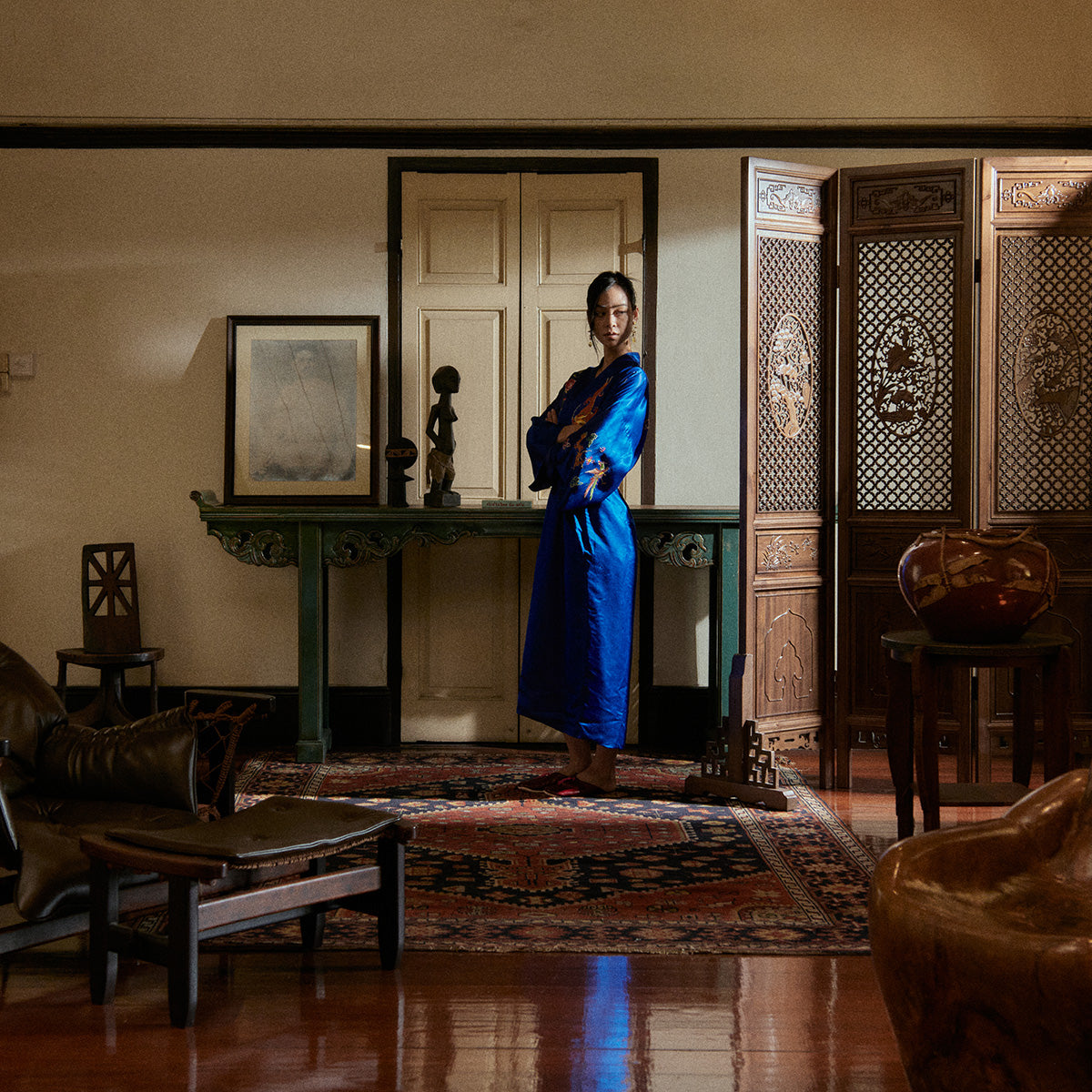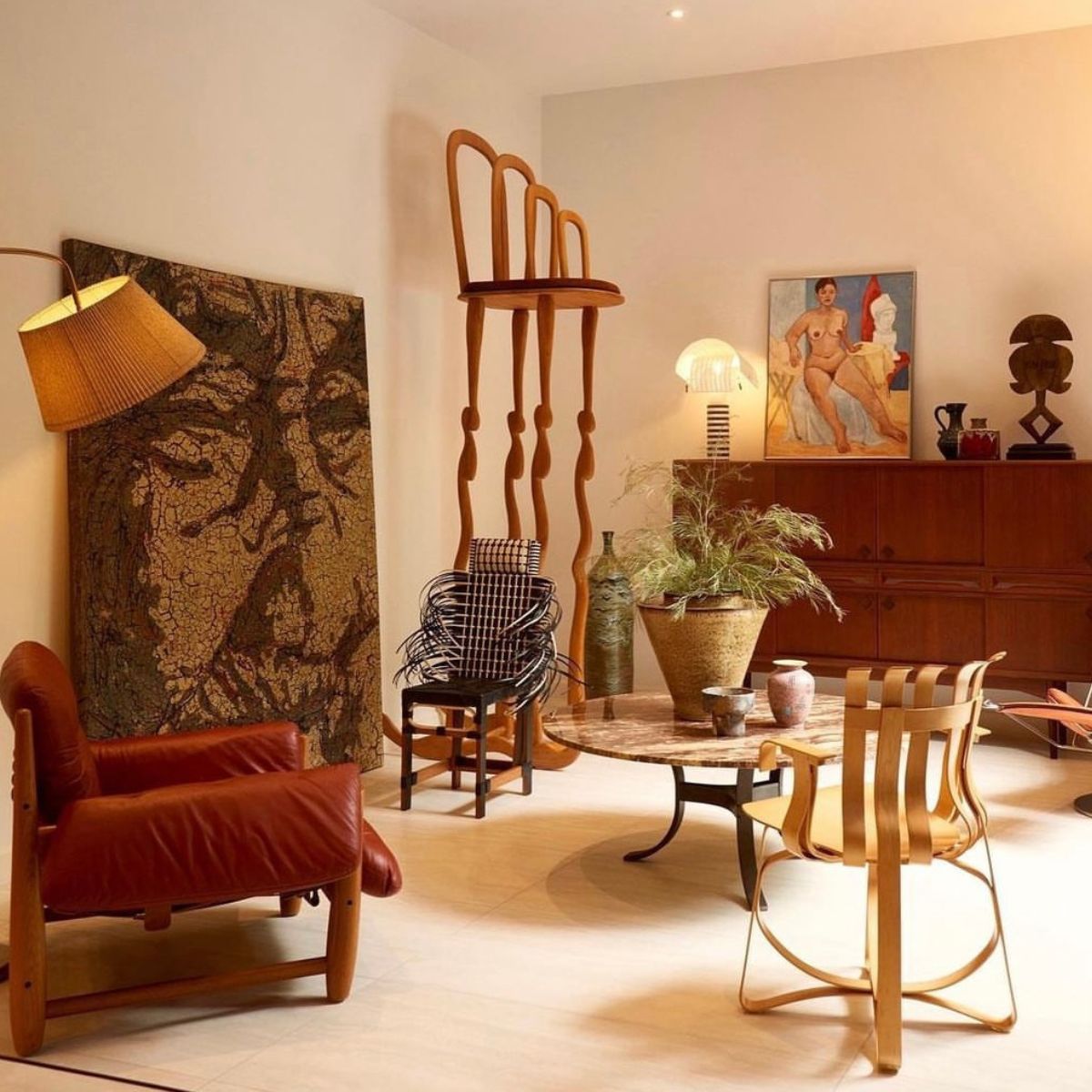Embarking on the journey of school architecture opens a realm where creativity meets functionality, and every corner is designed with purpose and potential. It's about more than just bricks & mortar, its about sculpting spaces that inspire curiosity, foster collaboration, and spark imagination. From the layout of classrooms to the arrangement of outdoor play areas, every element is meticulously planned to create an environment conducive to holistic growth and development. In the world of educational architecture, innovation thrives, as schools continually seek new ways to enhance the learning experience and shape the future of generations to come.
In the heart of Sukhumvit 38, Bangkok, lies Curious Kind Childhood Centre, this exciting new educational space is making waves in early childhood learning. Founded by Praew Kongtoranin, a graduate of The New School in New York City with a Masters degree in Early Childhood Education, this kindergarten offers a fresh perspective on school architecture. Here the institution has crafted a learning space intentionally designed to serve as a dynamic canvas, allowing children to personalize their own educational surroundings and empower themselves as architects of their own learning journey.
Rooted in the Reggio Emilia Philosophy, the approach to education is all about putting the child first. Originating in the town of Reggio Emilia in Italy, this philosophy emphasizes creating an environment that stems from children’s desires rather than the institution to be at the forefront of their own educational experience.
Unlike traditional education systems, which often follow a fixed curriculum, the Reggio Emilia approach encourages educators to listen to and observe children, shaping the learning environment based on their needs and interests. “It's a more hands-on, child-centered approach that aims to empower young learners and ignite their natural curiosity and love for learning” explains Praew. “We regard the environment as the ‘third teacher,’ alongside parents and educators. This perspective underpins the thoughtful yet flexible design of our spaces. While the environment might appear initially unadorned, it is deliberately structured to facilitate and enhance learning experiences, offering a backdrop that children can interact with and transform over time”.
Her philosophies encourage parents and visitors to first notice the children engaging with the space, reflecting their active role in the learning process. “Our environment is crafted to be enabling and stimulating, ensuring that children’s learning continues robustly, even in the absence of direct educator interaction. By adopting the child-led approach, we prioritize self-directed exploration and discovery, with educators playing a supportive role as facilitators.”
Her collaboration with 'Supar Studio,' a Bangkok-based architectural design firm, has played a crucial role in manifesting this vision. Renowned for their innovative design processes and dedication to humanistic architecture, the firm effectively brought her vision to fruition. Together, their partnership introduces a novel perspective on child development and its integration with the principles of educational architecture in Thailand.
In crafting the space, Praew Kongtoranin confronted a fundamental question: "How do we fashion an environment that authentically reflects children's desires and amplifies their originality?" This inquiry sparked a fascinating exploration, one that involved immersive workshops with children aged 3-7. Through these workshops, children were invited to envision their dream playground and articulate their vision of the ideal play space. “We provided various loose parts, arts and craft materials for the children to construct 3D models.” The results were illuminating, “after analyzing these creations, we identified recurring themes that the children valued, such as hiding spaces, swinging elements, climbing structures and elements of risk and adventure. These child-originated ideas were instrumental in shaping the design of our outdoor play areas, ensuring they were both engaging and resonated with the children’s imagination and needs”.
Today, Surround Living have the pleasure of visiting Curious Kind International Early Childhood Centre with Praew, the visionary behind the thoughtfully designed kindergarten, to delve deeper into the journey that led to its establishment and their unique approach to education.
Upon arrival, our first steps led us into the playground area. At the heart of the garden stood a sprawling outdoor play structure, intricately woven around a majestic Banyan Tree. This impressive area, also known as a “Tree Playscape,” was a child's dream come to life—a treehouse slash playground area incorporating the majesty of nature and the seemingly limitless expanse of the outdoors and constructed entirely from what appear to be natural materials and textures, it was carefully curated for both safety and harmony with nature.

This naturally themed playground, with its interplay of light and shadows and other organic elements, fosters exploration and connection with the natural world within a secure and thoughtfully crafted environment. From logs and climbing structures to boulders and plants, even including a touch tank reminiscent of aquariums hosting friendly turtles and amphibians, each feature is strategically arranged to beckon children to engage their senses fully and form early impressions of the wonders of nature.
“When designing the physical space of Curious Kind, we tried to balance the need for safety with the imperative for a realistic, explorative environment” She explains “while childproofing is crucial, we believe it is equally important for children to engage with spaces that allow them to learn about and manage risks, particularly evident in our playground design.
To illustrate this, Praew describes that teachers will often set up a nature exploration corner with magnifying glasses, samples of various leaves, rocks, and soil, alongside reference books This setup invites children to investigate, ask questions and engage in scientific thinking independently, sparking curiosity and fostering a deeper understanding of the natural world.
As we navigate through the school, a sense of tranquility envelops us, emanating from the serene palette of neutral colors tones and an ambiance whisper of home, inviting warmth and comfort into the educational realm. Here, learning transcends the confines of traditional classrooms, embracing the ethos of a perpetual journey. “Its important to craft a school environment that exudes comfort and warmth, mirroring the familiarity of a home setting, which was essential in seamlessly bridging the learning experience across various contexts”. This reinforces the notion that learning is an ever-present, continuous journey not limited by the confines of school and that children are fueled by innate curiosity and are constantly absorbing knowledge.
"Here, upcycling is strongly encouraged as well," she shared. "Repurposing everyday household items or repurposing discarded or broken items fosters innovation and creativity. Shiny new toys and purpose-built structures aren't always the optimal choice for children. Witnessing different ways of utilizing objects or discovering creative uses for old or discarded items enhances the learning journey. "For example. our library isn't purpose-built; it's actually a walkway, hence why we affectionately refer to it as the 'walking library'.
The integration of outdoor wisdom into childhood development has permeated even the classrooms. Flexibility and adaptability were fundamental design principles guiding the creation of these spaces. "We intentionally designed the classrooms to be somewhat unstructured, allowing each group of children to shape their environment with their ideas and preferences. This means the look and feel of the classrooms would evolve year by year," she elaborated. Intrigued by her insights, we gathered around a table under the canopy, eager to delve deeper into her vision.
Can you tell us more about the Reggio Emilia philosophy behind Curious Kind and how it differs from traditional educational approaches?
Curious Kind’s approach is rooted in a contemporary, flexible and child-centered curriculum. We integrate various educational approaches to create a customized program tailored to the unique needs and characteristics of each child and group of children. Unlike traditional educational methods, which often apply a one-size-fits-all curriculum, our approach is inherently child-centered. We begin with the child - their interests, preferences, and capabilities as the starting point for their learning journey.
At the heart of our educational practice are our distinct core pillars: curiosity, relationships, and democracy. These principles are interwoven into every aspect of our program, ensuring that we nurture a learning environment where children are not confined by boundaries but are encouraged to explore and engage with the world around them freely. This open-ended approach allows children to drive their learning journey, fostering a sense of autonomy and ownership that is often absent in more conventional educational settings. Our aim is not only to educate but to inspire a lifelong passion for discovery and learning in a context where every child feels valued, understood, and connected.
What considerations went into designing the physical space of Curious Kind to promote exploration and creativity?
During the initial phase of our school, only the ground level was in use for classrooms, and the upper level served as storage, appearing dark and uninviting from the outside. To alleviate this, we introduced colored films on the windows, which not only mitigated the stark appearances but also enriched the learning environment. These films cast varying shades of colour throughout the day, responding dynamically to the sun’s movement, beautifully demonstrating cause and effect in a natural context, this always grabs the children’s attention and curiosities.
This child-centric approach perspective guided our decisions to create spaces that are not only safe but also nurturing and inviting. We strive to craft an environment that feels calming, cosy and home-like especially significant for children as they embark on their first experience away from home.
Natural light, accessible and varied materials, open spaces, and intentional elements like the colored window films contribute to an atmosphere that encourages exploration and creativity. We aimed for a setting where children feel empowered to explore, imagine, and express themselves freely, with educators always nearby to support and guide them in navigating both physical and developmental challenges.
In summary, the design of CK is the result of a deliberate process to create an environment that is safe yet stimulating, familiar yet full of possibilities. It ensures that every child can explore and grow in a setting that respects and enhances their innate curiosity and creativity.
Aside from the surroundings, in what ways does Curious Kind encourage child-led learning and individuality among students?
“ We place a strong emphasis on child-led learning and nurturing individuality among our students. We believe in empowering children by offering them choices and actively involving them in decision-making processes. This approach allows children to explore their interests and preferences, fostering a sense of autonomy and self-direction.
By allowing children to vote on which books they’d like to read and participate in activities, as well as selecting from a range of options for projects or play, we ensure that students’ voices are heard and valued. This democratized approach extends to significant aspects of school life, such as participating in the creation of classroom rules at the start of each school year. By doing so, we not only promote individuality but also instill a sense of responsibility and community belonging in our students.
In essence, our environment is designed to be responsive to the interests and developmental stages of each child, ensuring that learning is both personalized and meaningful. Through this child-centered ethos, we facilitate an educational experience where every student can thrive as an individual while being an integral part of the collective learning journey (as should be reflected in society in the real world)”.
As we conclude our conversation with the visionary behind Curious Kind, it becomes clear that this institution is more than just a place of learning. Curious Kind stands as a beacon of innovative education, guided by visionary leadership and a steadfast commitment to child-centered learning. By nurturing curiosity, fostering exploration, and celebrating individuality within carefully crafted environments, the nursery empowers children to take ownership of their learning journeys and become active participants in their educational experience.
As we look to the future of education, Curious Kind serves as a model for reimagining uncertain traditional approaches and embracing new paradigms that prioritize the holistic development and well-being of every child. With their dedication to creating dynamic learning environments that inspire exploration, discovery, and lifelong learning, one thing is certain, Curious Kind is paving the way for a brighter, more empowered generation of learners.
For more information please visit: https://curiouskind.co.th/




